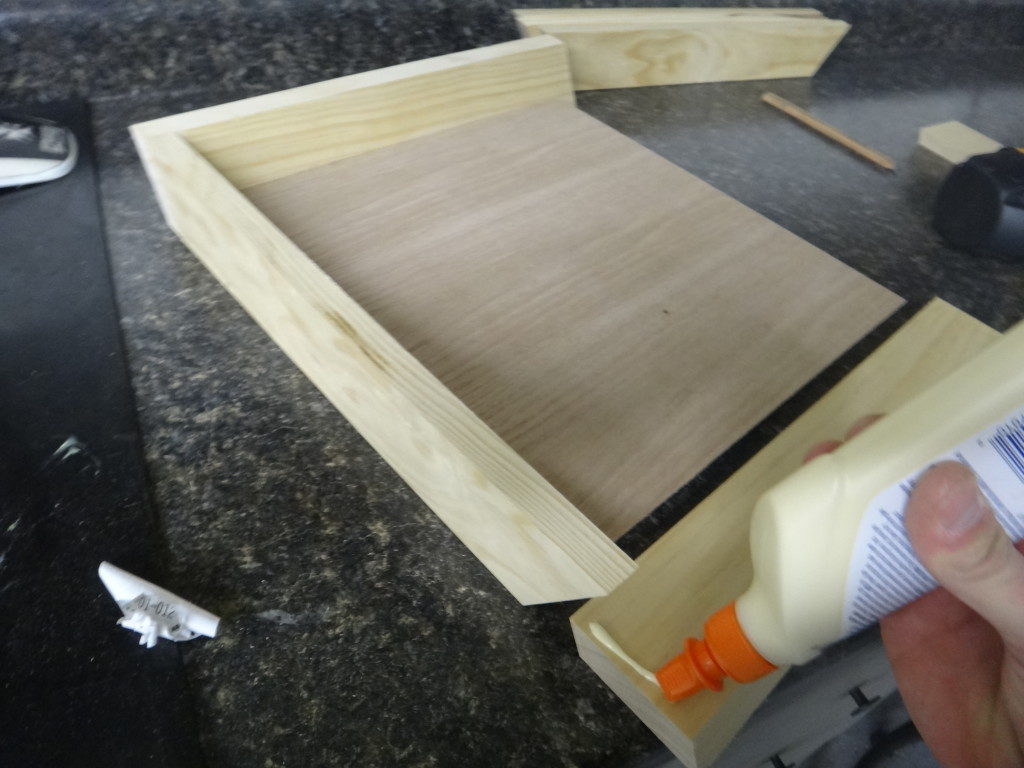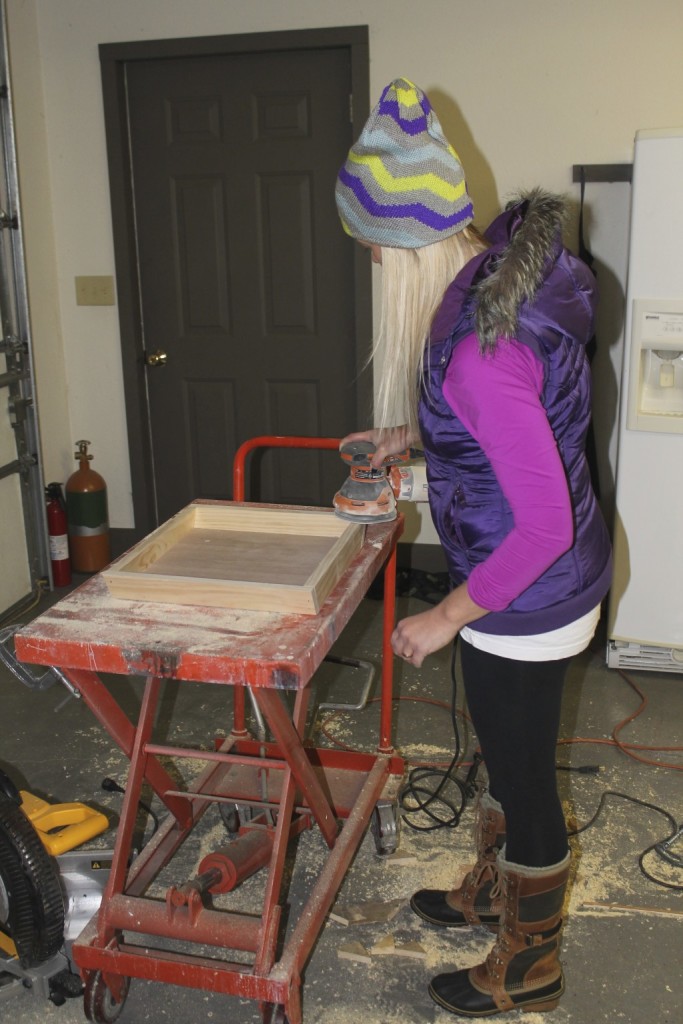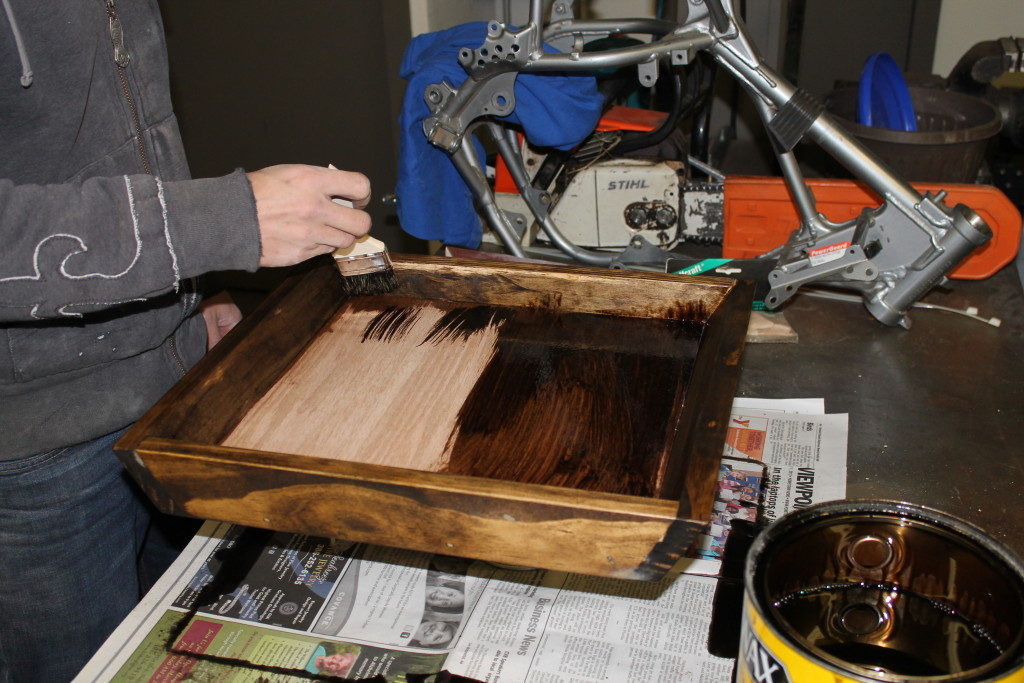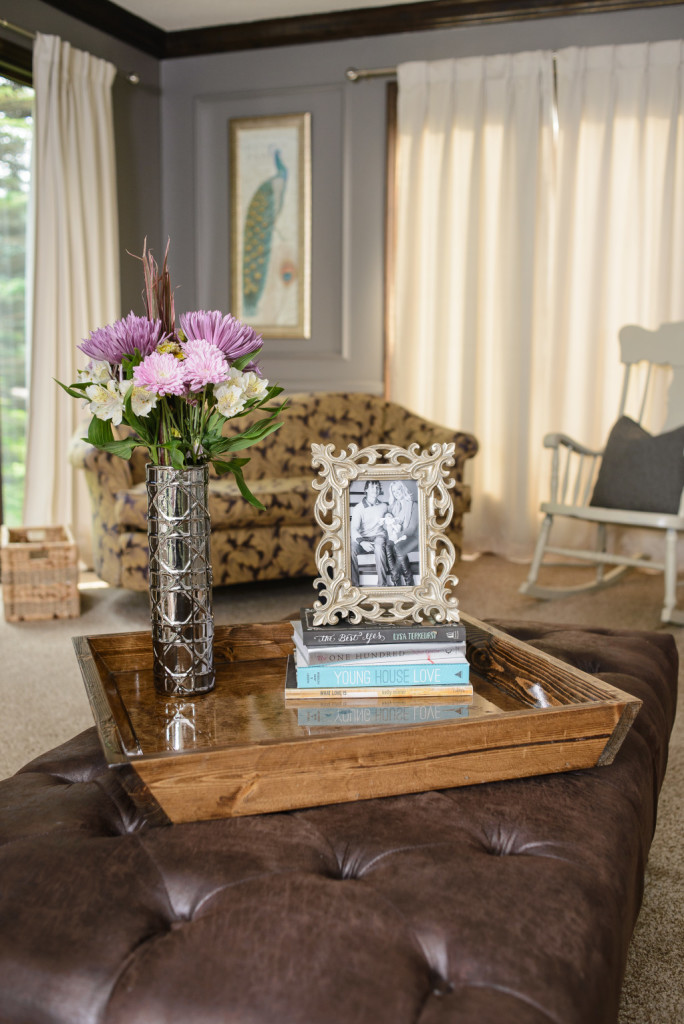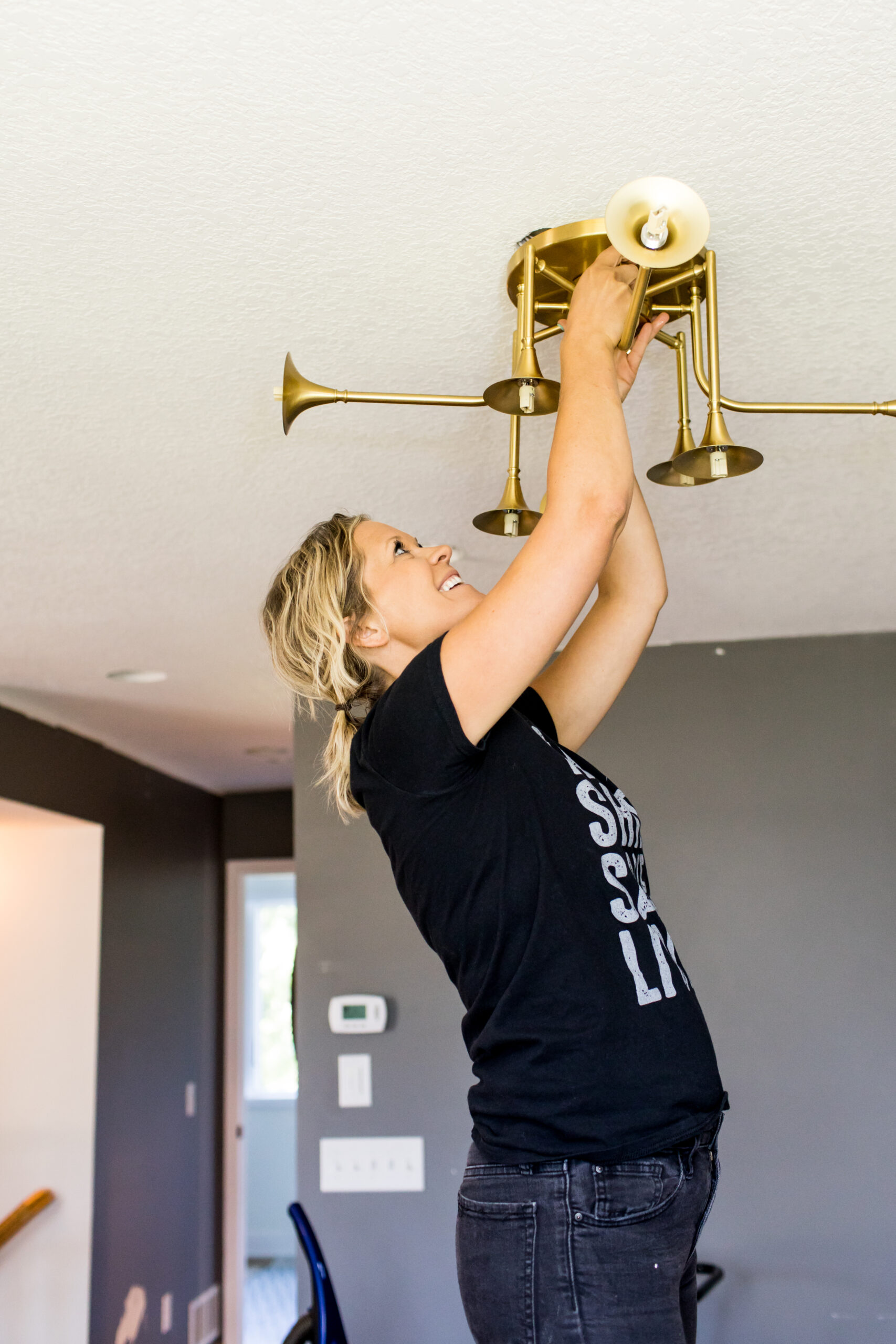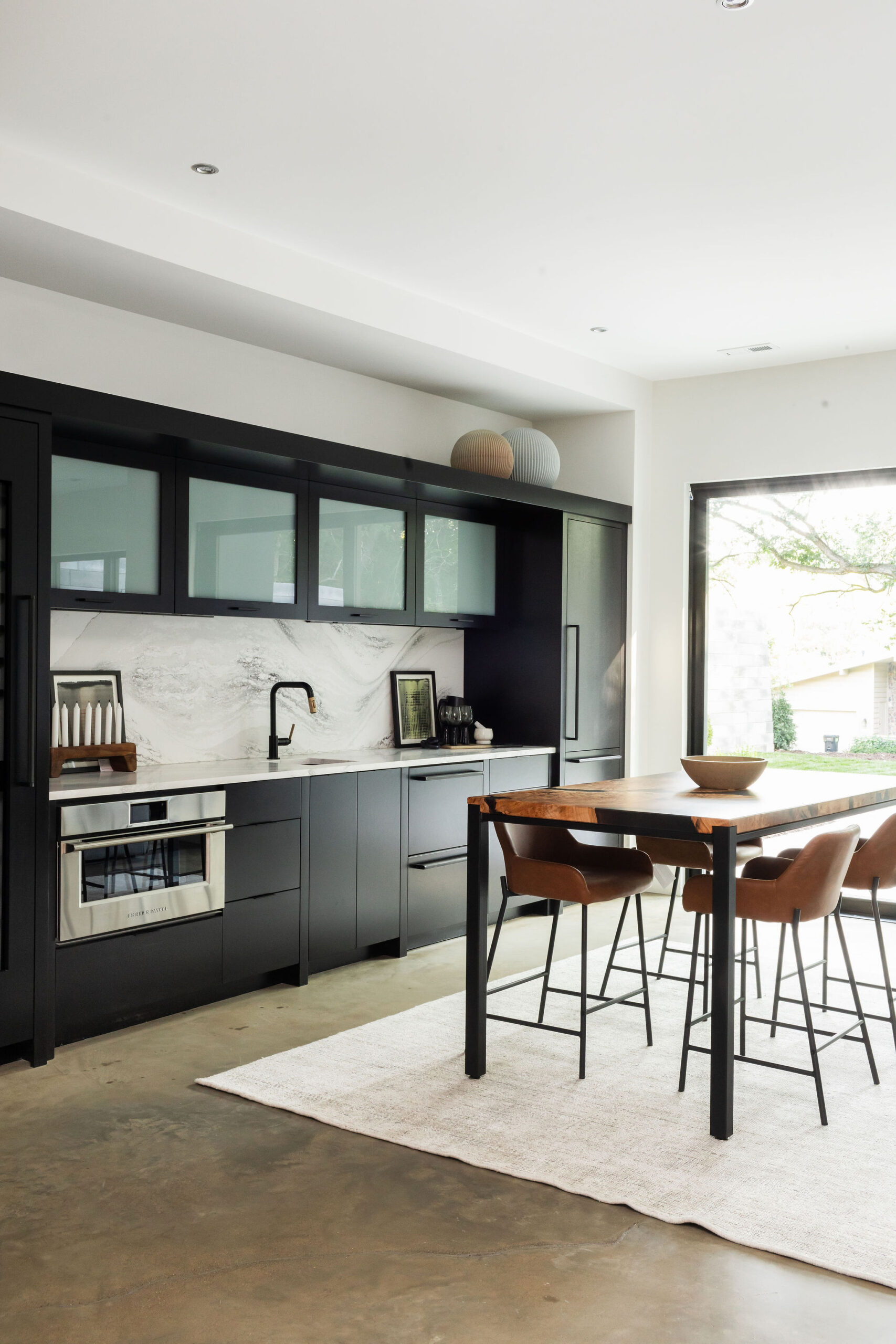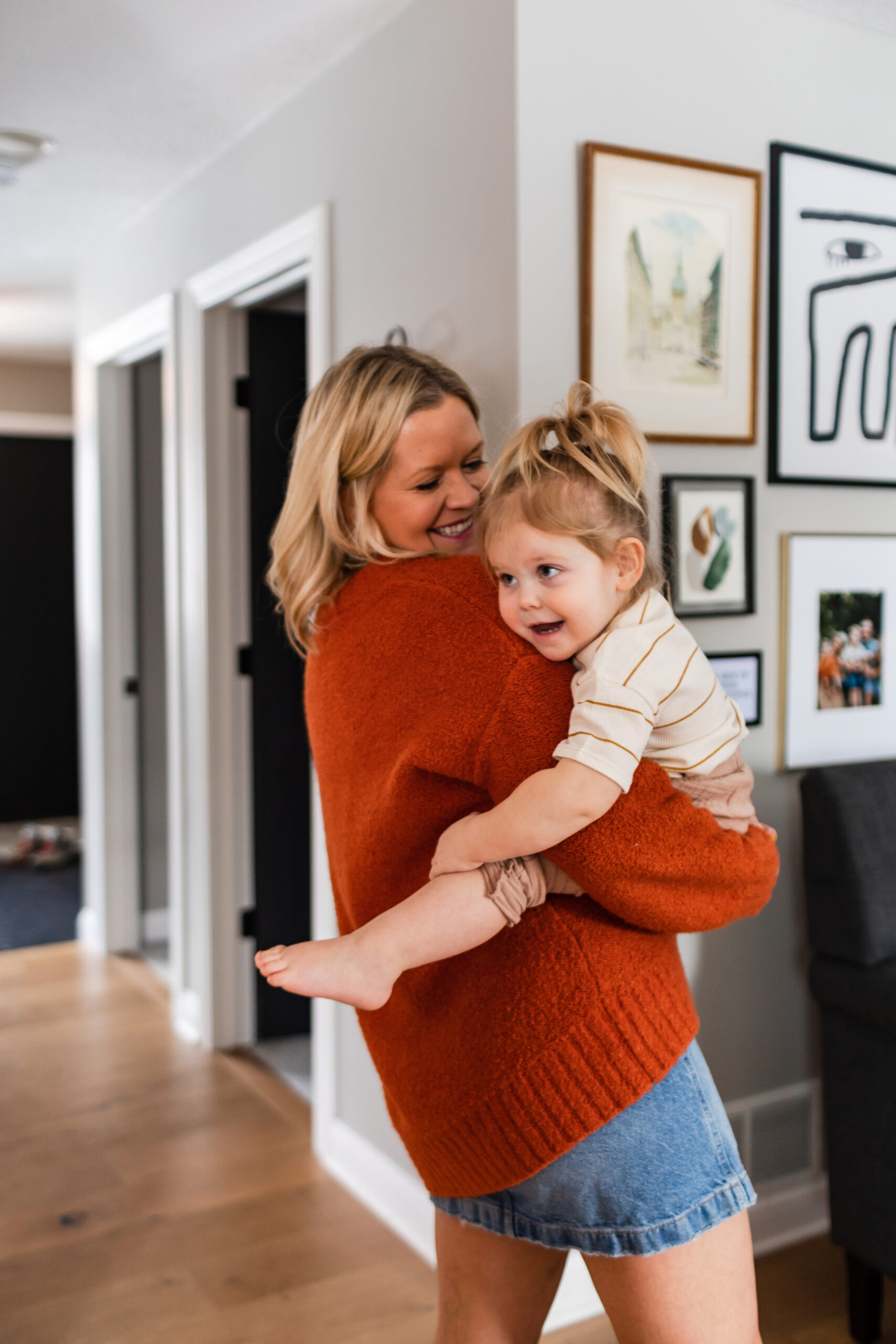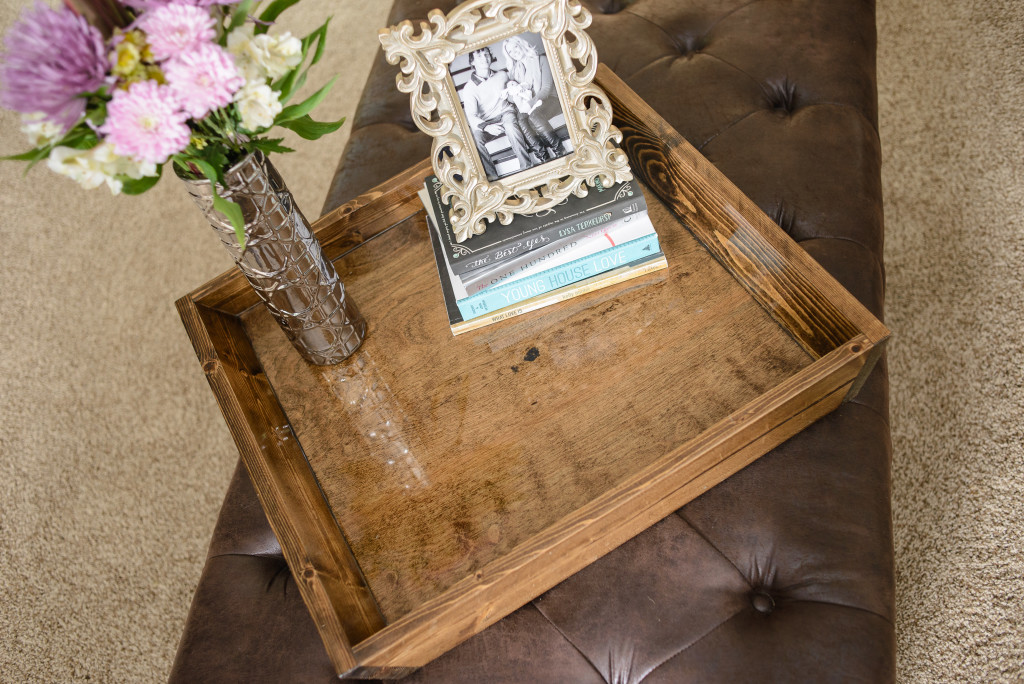
Today, we’re talking ottoman/coffee table trays! One of my favorite home decor pieces that my husband and I have made is our DIY ottoman tray. You can easily remove the tray from your ottoman to kick back and relax, use it like a table to place your food and drinks, or easily decorate the tray to add some fun style to your space.
The best part is that if you get bored with the style in your room, you can change it up by repainting the tray, adding a fun paper liner into the base, or simply restyling it. When decorating our home, I’m always thinking about our kids because I want everything we put into our home to be stylish, but also functional and practical for our family. Remember, just because you have kids, doesn’t always mean you have to give up your design style!
So, here’s how you can make your own DIY ottoman tray.
Materials Needed
Using the materials below, we built this DIY ottoman tray for under $20:
- Wood
- Saw
- Wood Glue (our favorite is Gorilla)
- Nails
- Hammer or Nail Gun
- Sand Paper
- Stain or Paint (we used Walnut Stain)
- Poly or bar top epoxy
Step #1: Measure and Cut
The first piece you want to cut is the largest piece, the tray bottom. Depending on the size of your ottoman, you can determine the size you want your tray to be. We’d suggest having your tray cover a good portion of the ottoman, so that it’s sturdy and gives you as much space as possible to hold items as possible.
We used our table saw to cut the bottom material to size, but any hand saw will do. Once you have the base piece down, you will want to cut your four sides. Take measurements from the base piece for the outside edge boards.
For our tray, we kept the 30 angle ripped side 1 1/2″ longer so it evens up with the outside edge of the other outside edge board. After the bottom was cut to size, we ripped the sides using the 30 degree bevel again on the table saw, which means we cut the top of the bottom and base of the sides boards that will angle out.
Step #2: Glue together
Once all the pieces are cut to size and fit nice and snug together, the next step will be to glue all the wood to the base contact areas.
There are two ways of assembling the trays: you can either glue and nail the sides together and then drop the middle tray piece in, or you can work around the middle tray from corner to corner putting each piece on as you work your way around.
We always prefer to work our way around, but we have utilized both ways. Once all four sides are glued together, finish nail them for added strength. Using a nail gun or hammer and nails you can quickly tact some nails into the base of the four outer edges for support.
Step #3: Sand
Once you get the trays assembled and glued together, it’s time to sand. The purpose for sanding wood is to remove any dents, gouges, imprints from the manufacturer, and to give your tray an even and consistent finish.
It will also help to ensure your tray works well in your space and around kids to round the sharp edges. We used our electric sander for this project, but hand sand paper works just as great, if not better!
If you do have an electrical sander, be very careful to not push down too hard in certain areas or you can create waves in your finished product. As always, make sure to sand with the grain of the wood when sanding.
Step #4: Stain & Seal
Once sanded and cleaned off, your serving tray is ready for stain or paint. We always use Minwax, Wood Finish, Walnut Stain. This color gives anything a nice dark, rich finish. For another fun option, you could paint the inside of our tray white and stain the edges. When working with stain, you can apply the stain with a brush or rag.
If you do the rag approach, be sure to protect your hands by wearing some rubber gloves. Anything that permanently stains will stain your skin too. Once you have applied the stain, make sure to brush off any excess. If you would like the stain darker, you can go back over and apply more stain.
Once the stain has dried, it’s time for poly or sealer. This will give your tray a nice, smooth finish! For added durability and spill-proofing, use a bar top sealer epoxy so that your tray will be waterproof for any glasses or drinks that may be placed on it.
A simple sealer will work just as well, but you do have a greater chance of water marks from those glasses. Brush the sealer or polyurethane on with a brush in even smooth strokes, again making sure to go with the grain of the wood.
Step #5: Style
As always, my favorite step is styling! The key to styling your DIY ottoman tray is laying different objects, textures, and pops of color that go with the design of your room. Bring in a few books you’d like to read, framed pictures of your family, a good-smelling candle and natural elements like plants.
So there it is, your simple DIY ottoman tray!
